Alarm bells inevitably tend to go off when you see your child scratching their head.…
Read MoreA dizzying array of hair products and chemical treatments that promise you a good hair day, everyday crowd the shelves of supermarkets. However, if you’re looking for something natural then the ancient science of ayurveda might be able to help you out. Amla, or Indian gooseberry, can be your ally for great hair.
Amla (Emblica officinalis Gaertn.) is highly prized in Ayurveda for its many therapeutic and medicinal properties. It is thought to prolong life (ayushprada) and is said to have anti-aging, and rejuvenative properties (rasayana).
In Ayurveda, maintaining the three doshas – vata, pitta, and kapha – in a balanced state is the secret to a healthy life. And amla is considered to be tridoshashamak, that is, it can alleviate all three doshas. It is said to be particularly effective for pitta dosha.
Amla fruits are said to have five tastes (rasa):
with astringent and sour taste being predominant.
This fruit is a really good source of vitamin C and has powerful antioxidant properties. It also has many beneficial compounds such as ellagic acid, pyrogallol, geraniin, elaeocarpusin, gallic acid etc.
Amla is considered useful for treating a range of medical conditions like ulcers, fevers, indigestion etc. It is also a digestive, liver tonic, laxative, anti-inflammatory agent, and hair tonic.[1]Baliga, Manjeshwar Shrinath, and Jason Jerome Dsouza. “Amla (Emblica officinalis Gaertn), a wonder berry in the treatment and prevention of cancer.” European Journal of Cancer Prevention … Continue reading [2]Bhat, Pravin M., Hari Umale, and Madhukar Lahankar. “Amalaki: A review on functional and pharmacological properties.” Journal of Pharmacognosy and Phytochemistry 8, no. 3 (2019): … Continue reading
Has your hair become brittle and weak? According to ayurveda, an imbalance in vata dosha is thought to be behind dry brittle hair.[3]Aparrna Gupta.[What does your Ayurvedic dosha mean for your hair type?](https://www.vogue.in/beauty/content/ayurvedic-dosha-significance-for-your-hair-type-haircare-routine “What does your … Continue reading Amla has traditionally been used in Ayurveda as a hair nourisher. Now science confirms that it can help strengthen your hair.
One study looked at the effect of soaking untreated hair, bleached hair, and twice bleached hair in a solution containing amla extract. It was found that the solution coated the surface of the hair, particularly hair that was damaged by bleaching. And it made both untreated and bleached hair stronger and less likely to break.[4]Tiampasook, Pratya, Chaiyavat Chaiyasut, Bhagavathi Sundaram Sivamaruthi, Thanaroat Timudom, and Duangporn Nacapunchai. “Effect of Phyllanthus emblica Linn. on tensile strength of virgin and … Continue reading
How to use: Apply amla juice
Excessive hair fall is characterized as a condition called khalitya. An imbalance in pitta and vata is thought to cause hair fall. This problem is further aggravated when shonita (blood) and shleshma (mucous substance) don’t function properly which blocks the regeneration of hair.[5]Jain, Sanchit, and Sharma Anita. “Elixir action of ayurveda in khalitya.” An International Journal of Research in AYUSH and Allied Systems ISSN (2016): 2393-9583.
Amla can balance all three doshas, and is particularly useful for balancing pitta dosha. It is, therefore, considered ideal for tackling hair fall. Scientific research also demonstrates amla’s effectiveness at tackling hair loss. How does it work? Studies show that it
How to use: Apply amla oil
A flaky scalp and itchy head – we’ve all suffered from dandruff. Oily, irritated skin, dry skin, skin disorders like eczema or psoriasis, and even harsh skin care products can cause dandruff. A fungus known as Malassezia which feeds on oils present on the scalp is also implicated in this condition.[9][Dandruff](https://www.mayoclinic.org/diseases-conditions/dandruff/symptoms-causes/syc-20353850 “Dandruff”) Mayo Clinic. And studies have found that the fresh juice of amla fruits was found to be effective against Malassezia fungus.[10]Rasika, M., S. Parameshwari, P. Sivagurunathan, C. Uma, and M. Bhuvaneswari. “Antifungal activity of Amla extracts against dandruff causing pathogens (Malassezia sp.).” Int. J. Adv. Res. … Continue reading
In ayurveda, dandruff is known as darunaka. It is considered a minor disease or kshudra roga. An imbalance in pitta and vata are primarily thought to lead to dandruff.[11]Daulatkar, Kavita. “Dandruff-Ayurveda management for better hair care.” Journal of Ayurveda and Integrated Medical Sciences 3, no. 02 (2018): 85-88.< Amla, being tridoshashamak, has traditionally been used to deal with this condition.
How to use: As an amla hair mask
Another reason for an itchy scalp is lice. It’s most common in children between the ages of 3 to 11 and their families. This is because lice spread through close physical contact. And kids tend to put their heads together when they play.[12][Head Lice](https://medlineplus.gov/headlice.html “Head Lice”). U.S. National Library of Medicine.
While applying conditioner and then using a fine toothed lice comb is an easy and effective way of getting rid of lice many people also use prescription shampoos and creams for this purpose.
But did you know that amla can also help get rid of lice? In fact, one study compared a shampoo with amla extracts to chemical and commercial shampoos and found it to be more effective. It was able to kill 100% of the lice in 15 minutes.[13]Soonwera, Mayura. “Efficacy of herbal shampoo base on native plant against head lice (Pediculus humanus capitis De Geer, Pediculidae: Phthiraptera) in vitro and in vivo in Thailand.” … Continue reading
How to use
References
| ↑1 | Baliga, Manjeshwar Shrinath, and Jason Jerome Dsouza. “Amla (Emblica officinalis Gaertn), a wonder berry in the treatment and prevention of cancer.” European Journal of Cancer Prevention 20, no. 3 (2011): 225-239. |
|---|---|
| ↑2 | Bhat, Pravin M., Hari Umale, and Madhukar Lahankar. “Amalaki: A review on functional and pharmacological properties.” Journal of Pharmacognosy and Phytochemistry 8, no. 3 (2019): 4378-4382. |
| ↑3 | Aparrna Gupta.[What does your Ayurvedic dosha mean for your hair type?](https://www.vogue.in/beauty/content/ayurvedic-dosha-significance-for-your-hair-type-haircare-routine “What does your Ayurvedic dosha mean for your hair type?”).Vogue.2020. |
| ↑4 | Tiampasook, Pratya, Chaiyavat Chaiyasut, Bhagavathi Sundaram Sivamaruthi, Thanaroat Timudom, and Duangporn Nacapunchai. “Effect of Phyllanthus emblica Linn. on tensile strength of virgin and bleached hairs.” Applied Sciences 10, no. 18 (2020): 6305. |
| ↑5 | Jain, Sanchit, and Sharma Anita. “Elixir action of ayurveda in khalitya.” An International Journal of Research in AYUSH and Allied Systems ISSN (2016): 2393-9583. |
| ↑6 | Matsuzaki, Takashi, and Katsutoshi Yoshizato. “Role of hair papilla cells on induction and regeneration processes of hair follicles.” Wound Repair and Regeneration 6, no. 6 (1998): 524-530. |
| ↑7 | Luanpitpong, S., U. Nimmannit, V. Pongrakhananon, and P. Chanvorachote. “Emblica (Phyllanthus emblica Linn.) fruit extract promotes proliferation in dermal papilla cells of human hair follicle.” Research Journal of Medicinal Plant 5, no. 1 (2011): 95-100. |
| ↑8 | Kumar, Naphatsorn, Wandee Rungseevijitprapa, Nual-Anong Narkkhong, Maitree Suttajit, and Chaiyavat Chaiyasut. “5α-reductase inhibition and hair growth promotion of some Thai plants traditionally used for hair treatment.” Journal of ethnopharmacology 139, no. 3 (2012): 765-771. |
| ↑9 | [Dandruff](https://www.mayoclinic.org/diseases-conditions/dandruff/symptoms-causes/syc-20353850 “Dandruff”) Mayo Clinic. |
| ↑10 | Rasika, M., S. Parameshwari, P. Sivagurunathan, C. Uma, and M. Bhuvaneswari. “Antifungal activity of Amla extracts against dandruff causing pathogens (Malassezia sp.).” Int. J. Adv. Res. Biol. Sci 3, no. 1 (2016): 209-214. |
| ↑11 | Daulatkar, Kavita. “Dandruff-Ayurveda management for better hair care.” Journal of Ayurveda and Integrated Medical Sciences 3, no. 02 (2018): 85-88.< |
| ↑12 | [Head Lice](https://medlineplus.gov/headlice.html “Head Lice”). U.S. National Library of Medicine. |
| ↑13 | Soonwera, Mayura. “Efficacy of herbal shampoo base on native plant against head lice (Pediculus humanus capitis De Geer, Pediculidae: Phthiraptera) in vitro and in vivo in Thailand.” Parasitology research 113, no. 9 (2014): 3241-3250. |
| ↑14 | Suresh Babu. Homemade Herbal Cosmetics. Pustak Mahal. 2005. |
| ↑15 | [The Health Benefits of Amla Oil](https://www.verywellhealth.com/amla-oil-for-hair-89404 “The Health Benefits of Amla Oil”). Verywell Health. |

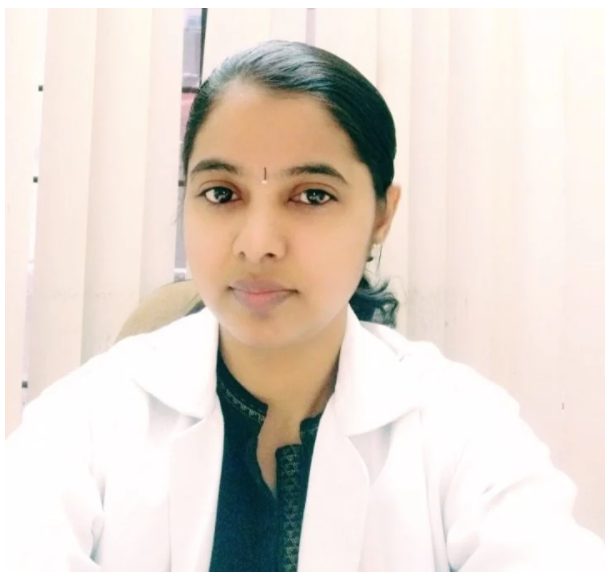
Dr. Manjula has 12 years of experience in the field of Ayurveda and worked as a Consultant and General Physician for over 5 years before starting her private practice. In addition to BAMS, she also has an Advanced Diploma in Clinical Research and is trained in Panchkarma. She is an expert at diagnosis of the root cause and planning effective treatment for multiple issues.
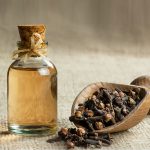
Alarm bells inevitably tend to go off when you see your child scratching their head.…
Read More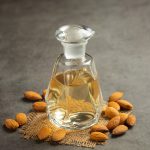
Sometimes hair loss can be caused by fairly simple things like hot oil hair treatments,…
Read More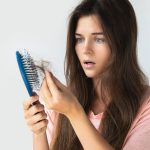
We can’t help but get a little worried when we notice hair falling out as…
Read More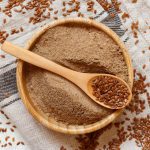
Don’t we all feel a tinge of envy when we see a shampoo ad? Who…
Read More